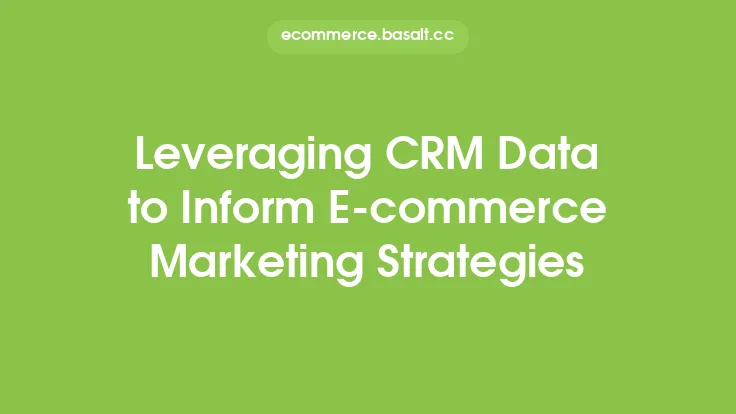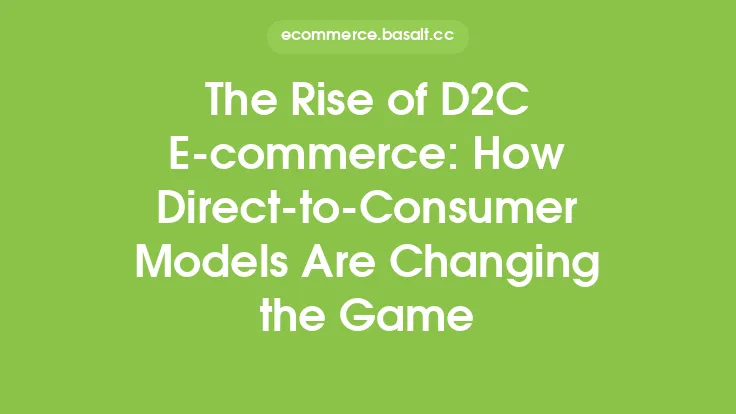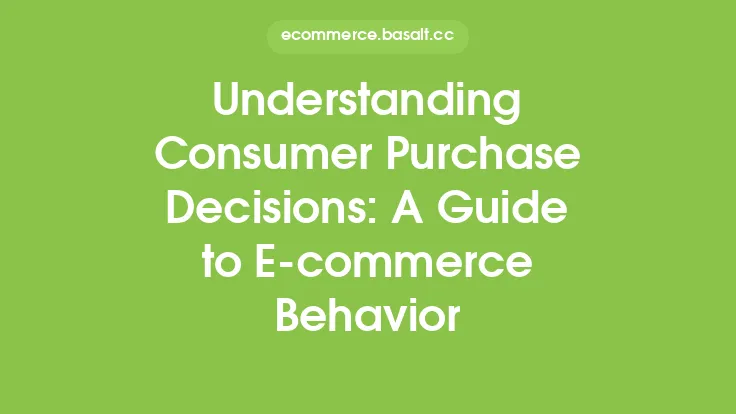In today's digital age, e-commerce has become a vital part of the retail landscape, with more and more consumers turning to online shopping for convenience, variety, and competitive prices. As a result, e-commerce businesses are constantly looking for ways to improve their marketing strategies and stay ahead of the competition. One key aspect of achieving this goal is by leveraging consumer data to gain a deeper understanding of their target audience and create more effective marketing campaigns.
Introduction to Consumer Data
Consumer data refers to the information collected about individual consumers, including their demographics, behavior, preferences, and purchase history. This data can be collected from various sources, such as website analytics, social media, customer reviews, and purchase transactions. By analyzing consumer data, e-commerce businesses can identify patterns, trends, and correlations that can inform their marketing strategies and improve their overall customer experience.
Types of Consumer Data
There are several types of consumer data that e-commerce businesses can collect and analyze, including:
- Demographic data: age, gender, location, income level, education level, etc.
- Behavioral data: browsing history, search queries, purchase history, etc.
- Preference data: product preferences, brand preferences, communication preferences, etc.
- Transactional data: purchase amount, frequency, and timing, etc.
- Social media data: social media activity, engagement, and influence, etc.
Each type of data provides valuable insights into consumer behavior and preferences, and can be used to create targeted marketing campaigns, improve customer experience, and increase sales.
Collecting and Analyzing Consumer Data
Collecting and analyzing consumer data requires a combination of technology, tools, and expertise. E-commerce businesses can use various tools, such as Google Analytics, social media analytics, and customer relationship management (CRM) software, to collect and analyze consumer data. Additionally, they can use data analytics techniques, such as segmentation, clustering, and regression analysis, to identify patterns and trends in the data.
Using Consumer Data to Improve Marketing Strategies
Consumer data can be used to improve e-commerce marketing strategies in several ways, including:
- Personalization: using consumer data to create personalized marketing messages, product recommendations, and offers.
- Segmentation: using consumer data to segment the target audience and create targeted marketing campaigns.
- Predictive analytics: using consumer data to predict future behavior and preferences, and create proactive marketing strategies.
- Content creation: using consumer data to create relevant and engaging content that resonates with the target audience.
- Customer experience: using consumer data to improve the overall customer experience, including website design, navigation, and customer service.
Benefits of Using Consumer Data
Using consumer data to improve e-commerce marketing strategies has several benefits, including:
- Increased conversions: by creating targeted and personalized marketing campaigns, e-commerce businesses can increase conversions and sales.
- Improved customer experience: by using consumer data to improve the overall customer experience, e-commerce businesses can increase customer satisfaction and loyalty.
- Competitive advantage: by leveraging consumer data, e-commerce businesses can gain a competitive advantage and stay ahead of the competition.
- Cost savings: by using consumer data to optimize marketing campaigns, e-commerce businesses can reduce waste and save costs.
Challenges and Limitations of Using Consumer Data
While using consumer data can be highly beneficial for e-commerce businesses, there are also several challenges and limitations to consider, including:
- Data quality: ensuring that the consumer data collected is accurate, complete, and up-to-date.
- Data privacy: ensuring that consumer data is collected and used in compliance with data privacy regulations and laws.
- Data analysis: ensuring that consumer data is analyzed correctly and insights are actionable.
- Integration: ensuring that consumer data is integrated with other systems and tools, such as CRM and marketing automation software.
Best Practices for Using Consumer Data
To get the most out of consumer data, e-commerce businesses should follow best practices, including:
- Collecting and storing consumer data in a secure and compliant manner.
- Analyzing consumer data regularly to identify patterns and trends.
- Using consumer data to create targeted and personalized marketing campaigns.
- Continuously testing and optimizing marketing campaigns based on consumer data insights.
- Ensuring that consumer data is integrated with other systems and tools to create a seamless customer experience.
Future of Consumer Data in E-commerce
The use of consumer data in e-commerce is expected to continue to evolve and grow in the future, with advancements in technology, such as artificial intelligence and machine learning, enabling more sophisticated and accurate analysis of consumer data. Additionally, the increasing use of mobile devices and social media is expected to provide even more opportunities for e-commerce businesses to collect and analyze consumer data. As a result, e-commerce businesses that leverage consumer data effectively will be well-positioned to succeed in a highly competitive market.





